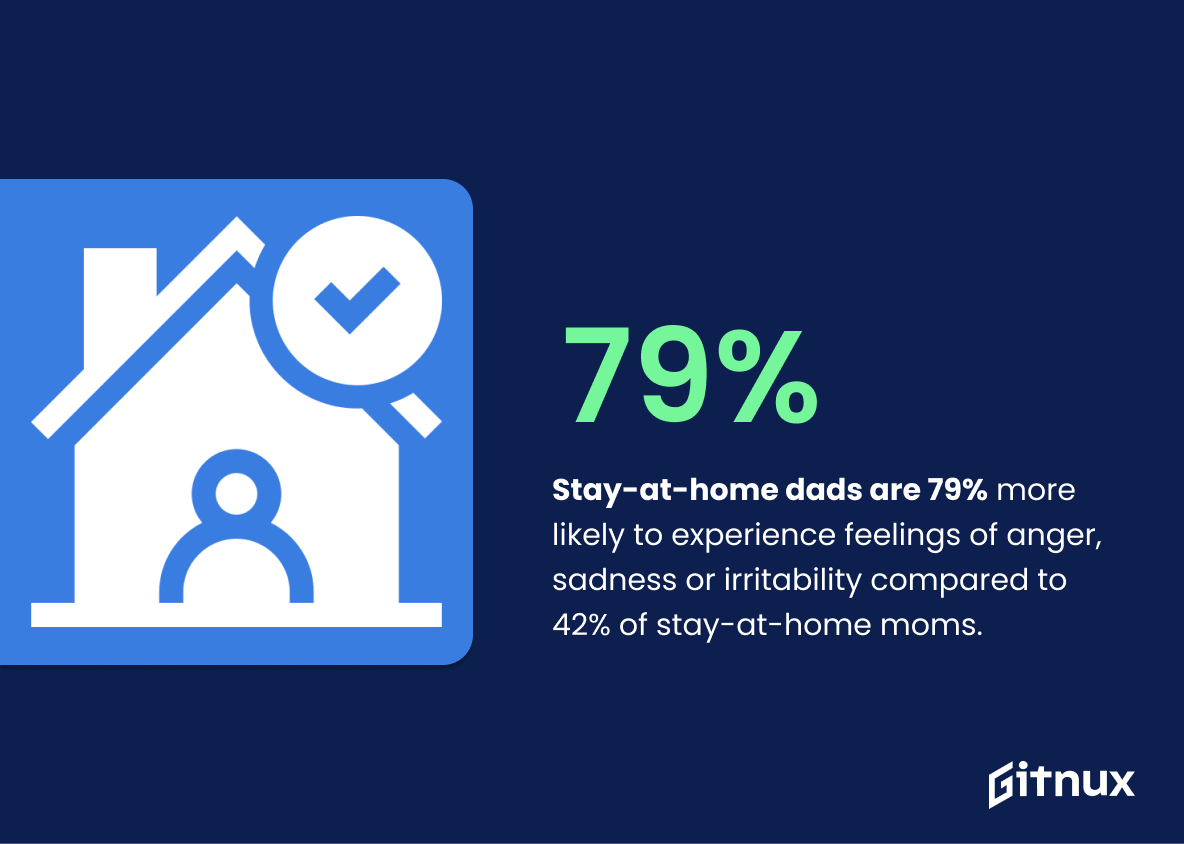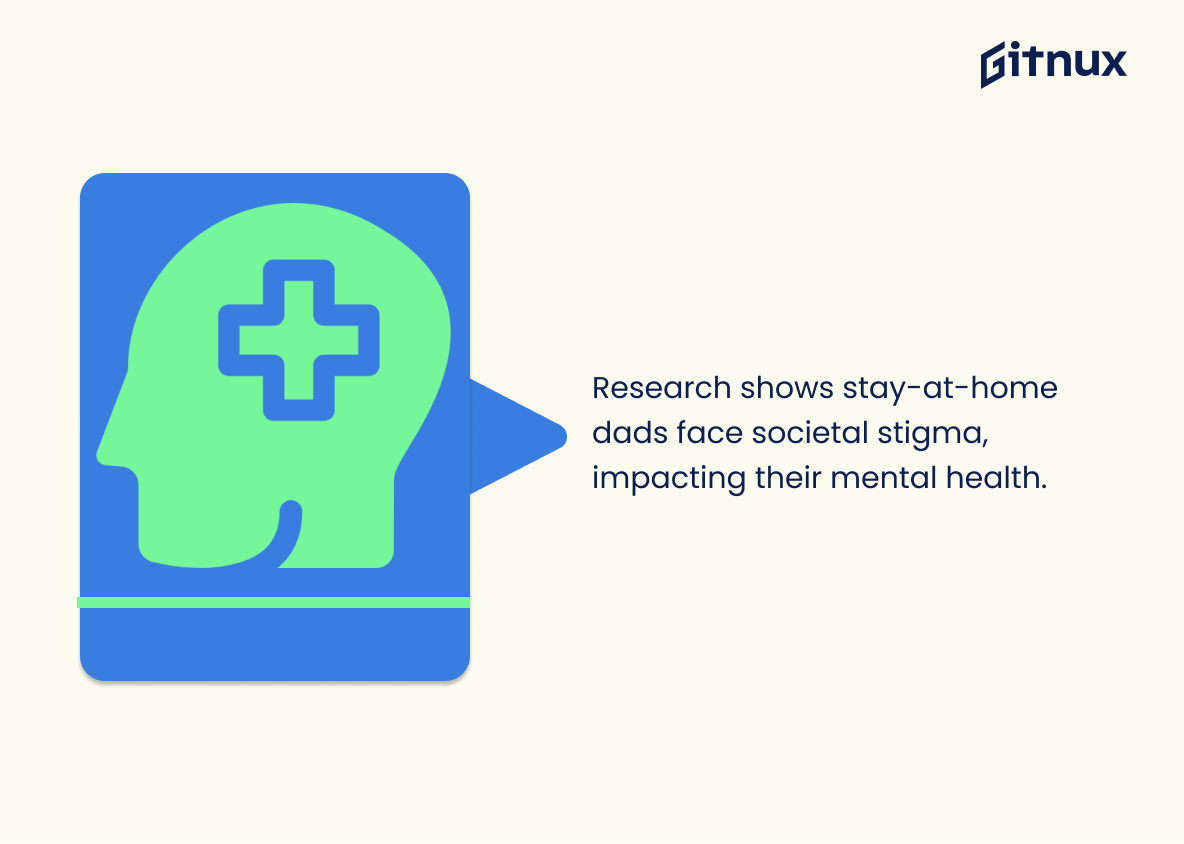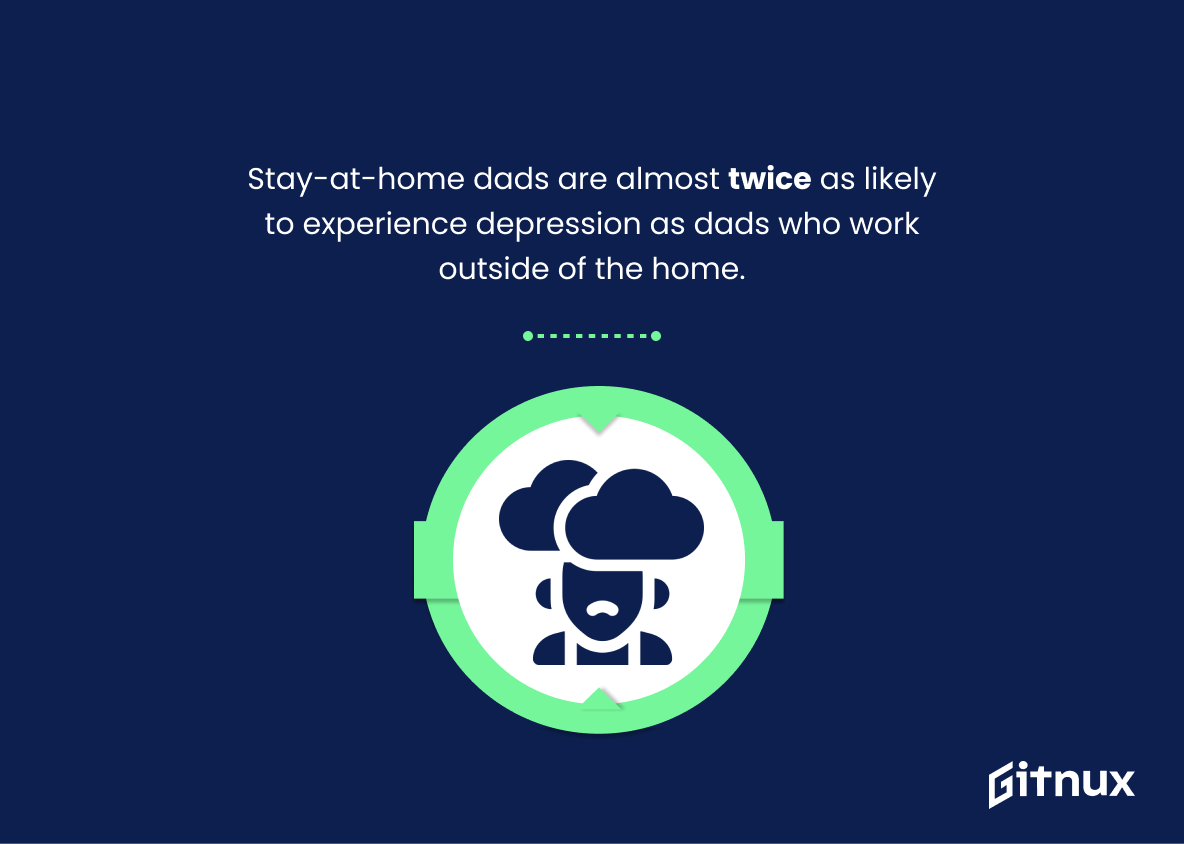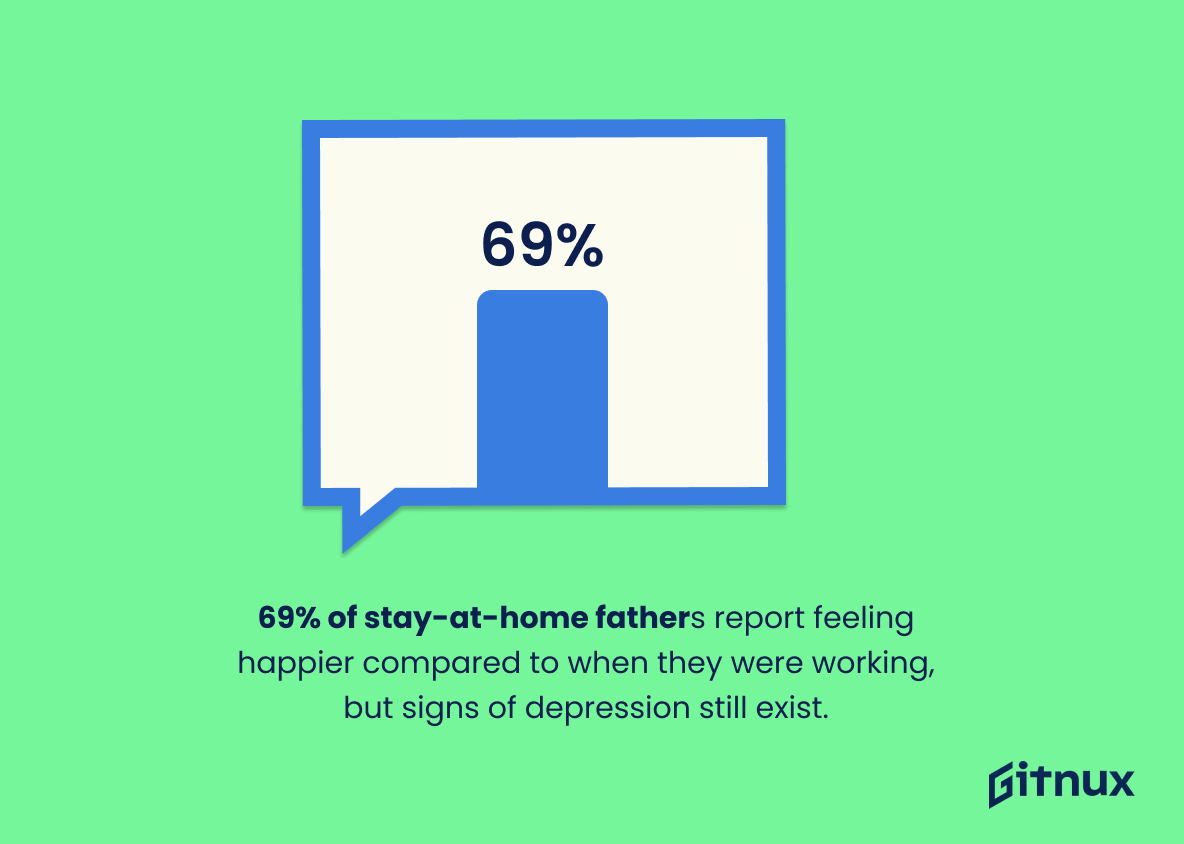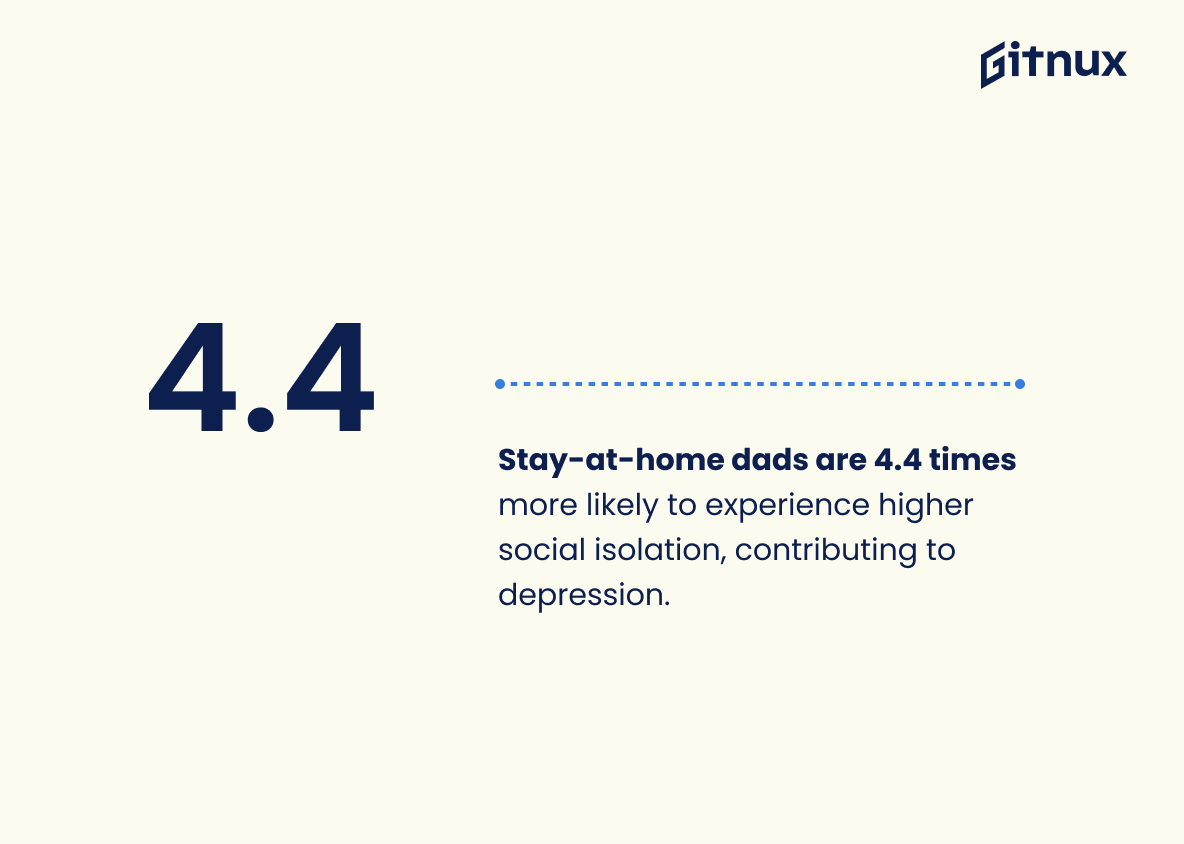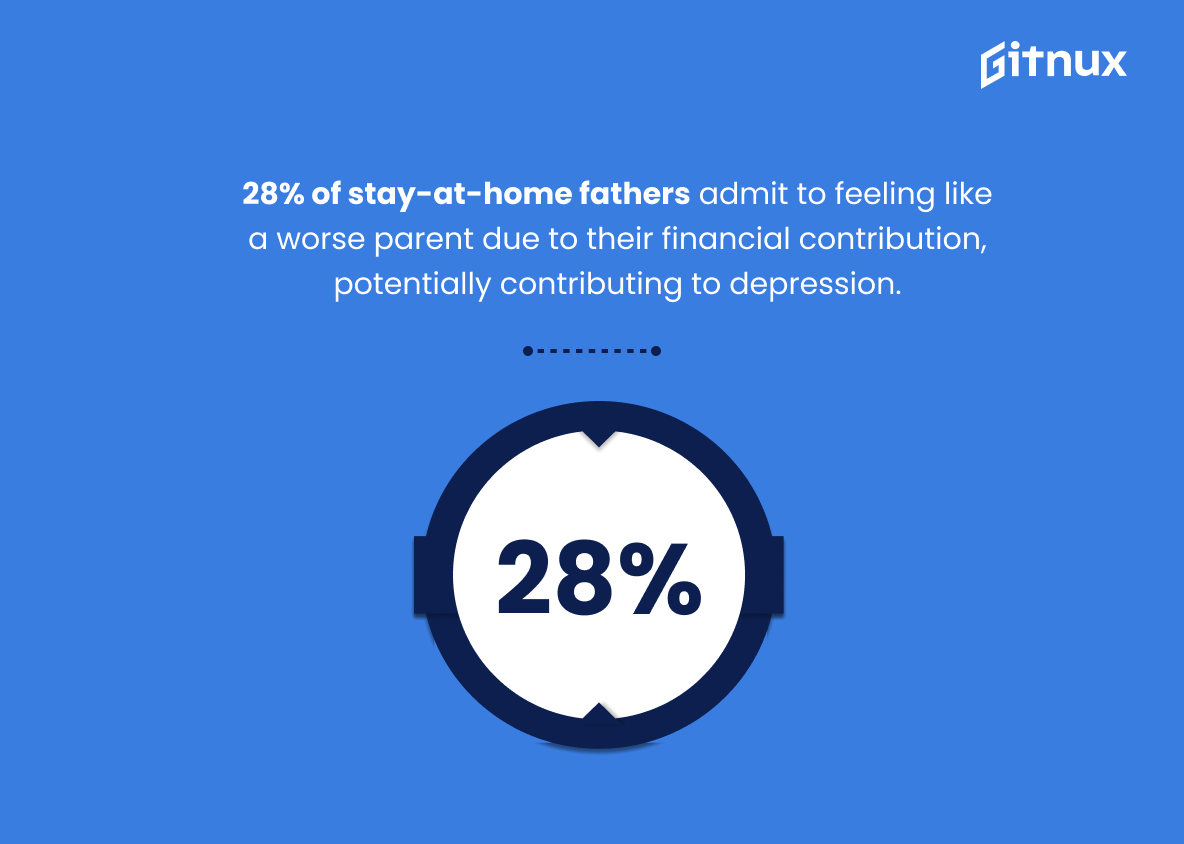Depression is a serious mental health issue that affects many people, including stay-at-home dads. Recent studies have found alarming statistics about the prevalence of depression among stay-at-home fathers and its potential causes. This blog post will explore 20 different statistics on Stay At Home Dad Depression from around the world to provide an overview of this important topic.
This statistic is a stark reminder of the unique struggles faced by stay-at-home dads. It highlights the fact that, compared to stay-at-home moms, they are more likely to experience feelings of anger, sadness, and irritability. This is an important point to consider when discussing the prevalence of depression among stay-at-home dads.
Living in a non-core metropolitan area increases the likelihood of stay-at-home dads feeling relatively more depressed.
This statistic is a powerful reminder that the mental health of stay-at-home dads is not only affected by the pressures of parenting, but also by the environment in which they live. Living in a non-core metropolitan area can be isolating and can lead to feelings of loneliness and depression. This statistic highlights the importance of providing support and resources to stay-at-home dads in non-core metropolitan areas, so that they can better cope with the unique challenges they face.
Stay At Home Dad Depression Statistics Overview
Approximately 3.1 million fathers reported staying home with their children in 2020, creating a larger pool of potential stay-at-home dads experiencing depression.
This statistic is a stark reminder of the growing number of fathers who are now taking on the role of stay-at-home parent. It highlights the potential for an increased risk of depression among this group, as they may be struggling to adjust to the new lifestyle and the associated pressures. It is a timely reminder that stay-at-home dads need to be aware of the potential for depression and take steps to ensure their mental health is taken care of.
Research shows stay-at-home dads face societal stigma, impacting their mental health.
This statistic is a stark reminder of the reality that stay-at-home dads often face: the stigma of not being a ‘real’ father. This stigma can have a serious impact on their mental health, leading to depression and other mental health issues. By highlighting this statistic, the blog post is emphasizing the importance of recognizing and addressing the mental health needs of stay-at-home dads.
Stay-at-home dads are almost twice as likely to experience depression as dads who work outside of the home.
This statistic is a stark reminder of the mental health challenges faced by stay-at-home dads. It highlights the need for greater awareness and support for these fathers, who are often overlooked in conversations about parenting and mental health. It also serves as a reminder that depression can affect anyone, regardless of their employment status.
Stay-at-home fathers make up about 7% of all United States dads.
This statistic is a powerful reminder that stay-at-home dads are a growing demographic in the United States. It highlights the fact that more and more fathers are taking on the role of primary caregiver, and that this is becoming increasingly accepted in society. It also serves as a reminder that stay-at-home dads are just as likely to experience depression as any other parent, and that it is important to be aware of the signs and symptoms of depression in this population.
69% of stay-at-home fathers report feeling happier compared to when they were working, but signs of depression still exist.
This statistic is a powerful reminder that, while stay-at-home fathers may experience greater happiness overall, depression can still be a reality. It highlights the importance of recognizing and addressing mental health issues among stay-at-home dads, and serves as a reminder that depression can affect anyone, regardless of their circumstances.
Stay-at-home dads are 4.4 times more likely to experience higher social isolation, contributing to depression.
This statistic is a stark reminder of the unique struggles faced by stay-at-home dads. It highlights the fact that these fathers are more likely to experience social isolation, which can lead to depression. This is an important issue to consider when discussing the mental health of stay-at-home dads, as it can have a significant impact on their overall wellbeing.
1 in 8 stay-at-home fathers report missing their previous job, leading to feelings of depression.
This statistic is a stark reminder of the emotional toll that being a stay-at-home father can take on a person. It highlights the fact that many fathers who have chosen to stay at home to care for their children may be struggling with feelings of depression due to missing their previous job. This is an important issue to consider when discussing the topic of stay-at-home dad depression, as it emphasizes the need for support and understanding for fathers who have made this difficult decision.
28% of stay-at-home fathers admit to feeling like a worse parent due to their financial contribution, potentially contributing to depression.
This statistic is a stark reminder of the emotional toll that stay-at-home fathers can experience due to their financial contribution. It highlights the fact that many fathers feel inadequate in their parenting role because of their financial situation, which can lead to depression. This is an important issue to consider when discussing the prevalence of depression among stay-at-home dads.
Study finds that men who are more involved in caregiving are less likely to experience severe depression symptoms.
This statistic is a powerful reminder that men who are more involved in caregiving are less likely to suffer from severe depression symptoms. It highlights the importance of men taking an active role in caring for their families, and how this can have a positive impact on their mental health. This is especially relevant in the context of Stay At Home Dad Depression Statistics, as it suggests that men who are more involved in caregiving can help to reduce the risk of depression.
Conclusion
It is clear from the statistics presented that stay-at-home dads are more likely to experience depression than other fathers. This could be due to a variety of factors, such as societal stigma, financial contribution issues and feelings of loneliness or isolation. It is important for stay-at-home dads to recognize signs of depression in themselves and seek help if needed. Additionally, it may be beneficial for them to find ways to connect with others who can relate and provide support during this time.
References
0. – https://www.www.pewresearch.org
1. – https://www.www.creditcards.com
2. – https://www.www.flexjobs.com
3. – https://www.www.neumann.edu
4. – https://www.www.dailymail.co.uk
5. – https://www.www.fatherly.com
6. – https://www.parenting.firstcry.com
7. – https://www.www.ncbi.nlm.nih.gov
8. – https://www.www.theatlantic.com
9. – https://www.www.hbstaffing.com
